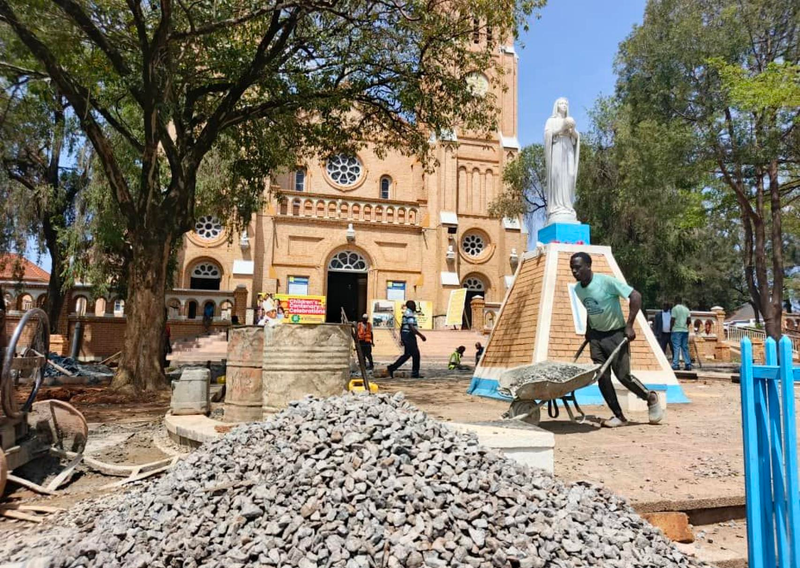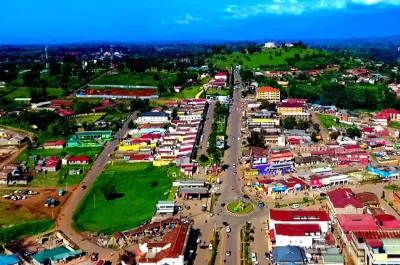
Renovation works at Lubaga Cathedral are reshaping the historic landmark as it prepares for its centenary celebrations. The upgrades focused on both the cathedral structure and its surroundings have significantly changed the familiar look of the church. A major transformation can be seen at the front of the cathedral, where new concrete flooring and granite have replaced sections of the once lush, green lawn. The area surrounding the iconic statue of Mary, after whom the cathedral is named, is also undergoing redesign.
“The renovation aims to create more comfortable spaces where visitors and pilgrims can sit, pray, and spend quiet time,” said the chairperson leading the renovation efforts.
However, the changes have sparked mixed reactions among parishioners. On Tuesday, Alex Mutambuze, who attended the noon mass, voiced his concerns. “I loved the old look with the green grass. It made the place feel peaceful and natural,” said Mutambuze, a regular churchgoer for over 20 years. “The new concrete makes it look too urban or completely different. I wish they had kept it all green.”
Responding to such concerns, Andrew Kijooma, deputy leader of the laity at Lubaga Cathedral, clarified that not all greenery is being lost. A substantial section of the lawn beside the cathedral will remain intact, preserving the peaceful atmosphere. Only specific areas are being transformed to incorporate paved spaces with benches, offering visitors spots to rest and reflect—especially during major church functions.
According to Kijooma, the renovations are intended to enhance beauty, comfort, and usability without erasing the cathedral’s historical charm. As part of these improvements, old asphalt walkways are being replaced with cobalt pavers, chosen for their durability and low maintenance. Inside the church, work is ongoing to repaint the walls, upgrade lighting, and furnish the interior. Plans for relocating and realigning the bishops’ graves, however, have not yet been executed.
Outside, efforts continue to complete the compound and parking facilities, though not without criticism. Some members of the congregation have voiced frustration at the slow pace of progress. One parishioner remarked, “By now, the works should have been completed, with the celebrations just a week or two away. But look, they are still struggling.” The delays have been attributed by some to the contractor, who is also serving as the head of the renovation committee.
The cathedral will celebrate its 100th anniversary on October 26, marking a century since its consecration. Construction of the current structure began in 1914 and was completed in 1925. Positioned prominently atop one of Kampala’s original seven hills, the towering edifice remains a visible and iconic feature of the city's skyline, particularly from downtown.
St. Mary’s Cathedral, Lubaga, can accommodate about 5,000 worshippers. The building measures 248 feet in length (260 feet including the walls), 63 feet in width, and 152 feet across the transept (162 feet with walls). The ceiling rises 50 feet above the floor, and its construction used approximately 2.5 million bricks. The cathedral’s founding vision came from Bishop Henry Halon in 1901, who initiated a call for contributions from Uganda’s Catholic community to support the project—envisioning it as the “mother of all churches” in the country.














Marlene Luwedde
Leave a Comment
Your email address will not be published.